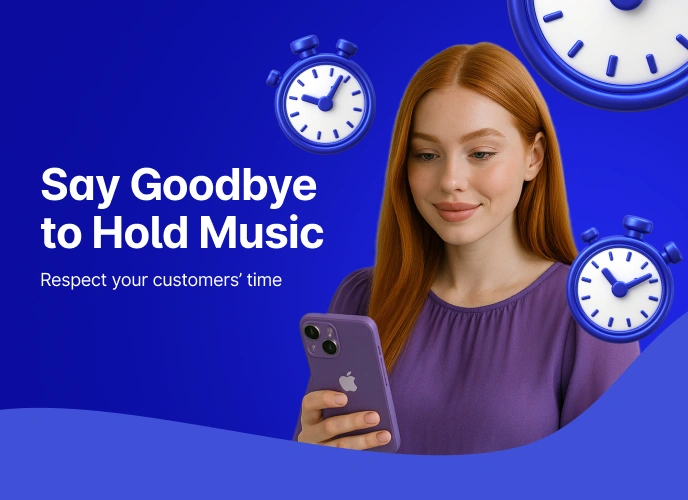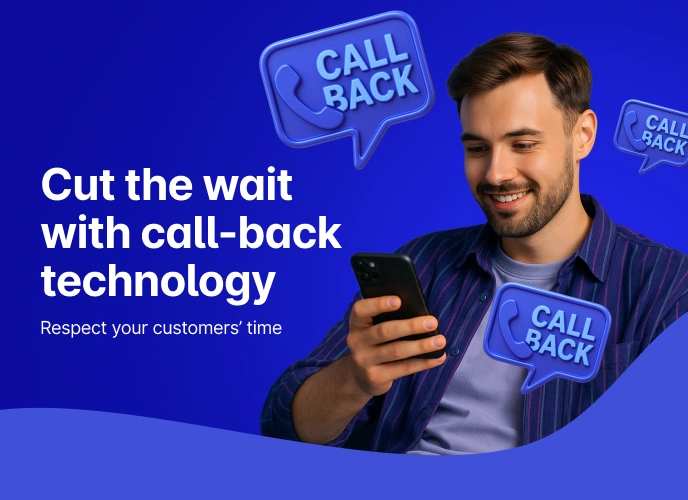

Arthur Kyselevskyi
September 1, 2025
Call Center Success: How to Improve Inbound Metrics & Keep Customers Happy
Running an inbound call center is a balancing act – too slow, and customers get frustrated; too rushed, and quality drops. What is the key to success in a call center? Tracking the right inbound call center metrics and using smart strategies to improve them. Here’s how to boost your call center efficiency, reduce costs, and keep the customer satisfied, delivering a better experience (spoiler: leveraging Teliqon’s solutions will get you there faster).
Speed Matters: Get Customers Connected Faster
No one likes waiting. Long response times lower customers’ loyalty, increase call abandonment rates, and put unnecessary pressure on your team.
How to Improve First Response Time (FRT)
FRT measures how quickly a customer gets a response from a live agent. The goal is to keep it as low as possible while maintaining high-quality service.
-
Use agent skill-based call routing to ensure customers are connected to the right agent the first time and avoid unnecessary transfers. Optimize call routing with a solution that features smart algorithms – for instance, Teliqon’s Cloud PBX.
-
A complicated IVR menu slows customers down, so reduce its complexity. Keep options simple and let them reach a human faster when needed.
-
Monitor and adjust staffing. Call volumes fluctuate – analyzing peak hours helps ensure the right number of agents are available at the right time.
How to Improve Average Speed of Answer (ASA)
ASA tracks how long a customer waits in the queue before reaching an agent. The lower the number, the better the customer experience.
-
Keep agents active and focused by aligning staffing levels with real-time call volumes. To achieve this, use simple scheduling practices or tools that help monitor workload and adjust shifts accordingly.
-
When wait times start creeping past 30 seconds, give customers the option to get a call-back instead of making them sit on hold. One of the simplest call center tips for success.
-
Automate simple question response: self-service IVR can handle inquiries like checking account balances, tracking order status, or confirming store hours, so agents can spend their time on calls that actually need critical thinking.
“In inbound call centers, speed and resolution are the twin pillars of customer happiness – one without the other often feels hollow. Giving agents the right tools and routing so issues are handled right the first time – not just quickly – is what really shifts the needle. It’s not about throwing more staff at the problem, but about systems, training, and design that let your team work smarter, not harder.”

Arthur Kyselevskyi
Chief Business Development Officer at Teliqon
One Call, One Solution: Fix It the First Time
When a customer calls, they expect a solution, not a headache. A high First Call Resolution (FCR) rate means your agents solve problems on the first try, while keeping Average Handle Time (AHT) reasonable ensures efficiency without sacrificing quality.
How to Improve First Call Resolution (FCR)
Customers hate calling multiple times for the same issue. The more problems resolved in a single interaction, the better your FCR. A standard call center success tips pattern here includes:
-
Give agents access to customer data, ensuring they have full account & request history at their fingertips (just a tip: Teliqon’s suite of products integrates with CRM easily and instantly).
-
Train your staff. Provide continuous call coaching and real-time feedback based on call recordings and analytics.
How to Improve Average Handle Time (AHT)
AHT includes talk time, hold time, and after-call work (ACW). The goal is to handle calls efficiently without rushing customers.
-
Reduce repetitive manual work: automate call logging and integrate CRM pop-ups so agents don’t waste time on data entry.
-
Optimize call scripts: train agents to ask the right questions quickly, without making the conversation robotic.
-
Route calls smarter by connecting customers to the right agent from the start. You’ll cut hold times and avoid unnecessary transfers at the same time.
Fewer Transfers, More Solutions
Every extra step in a customer’s journey increases frustration. If calls keep getting transferred, or if they drop before being answered, it’s time to make changes.
How to Reduce Call Transfers
Customers don’t want to repeat themselves. Too many transfers indicate agents lack the tools to handle inquiries or that calls are routed inefficiently. How to improve this one call resolution metric?
-
Match calls to the right agents with skill-based routing, so a tech support issue doesn’t end up with the billing team.
-
Improve internal communication with tools like chat, so if a transfer is needed, agents can quickly brief each other before handing off the call.
-
Expand agent knowledge: cross-train them on multiple issues to reduce unnecessary transfers.
How to Reduce Call Abandonment
If customers hang up before speaking to an agent, you’re losing business. High call abandonment is often linked to long wait times or system limitations (frankly, one of the least exciting call center success metrics).
-
Track peak call times and staff up accordingly to keep wait times down.
-
Use IVR to let customers check orders or reset passwords on their own instead of waiting for an agent.
-
Inform callers about the expected wait time – setting clear expectations helps keep them on the line.
Keep Customers Satisfied While on the Line
Beyond just solving problems, call centers need to create positive experiences that build loyalty and trust.
How to Improve Customer Satisfaction Score (CSAT)
CSAT measures how happy your clients are after a call. How to keep customer service better from he agents’ side?
-
Make it easy to get support: reduce friction in IVR navigation and online support.
-
Train agents to communicate clearly and confidently – not just with product knowledge, but with empathy and emotional intelligence.
-
Don’t wait for customers to follow up – if something isn’t fully resolved, reach out first and close the loop for them.
How to Improve Customer Effort Score (CES)
CES measures how easy or difficult it is for customers to resolve their issues.
-
Simplify support processes. Keep IVR options short, reduce transfers, and train agents to answer questions efficiently.
-
Make common issues self-service: let customers handle tasks like password resets or order updates without needing to speak with an agent.
How to Improve Net Promoter Score (NPS)
NPS reflects customer loyalty – are they happy enough to recommend your business?
-
Deliver fast, reliable service every time – customers are far more likely to recommend you when they know they can count on you.
-
Focus on solving issues in a single call to build trust and cut down on frustrating repeat interactions.
-
Personalize every conversation with past data to make interactions more relevant and engaging.
Final Word
If your inbound call center is still wrestling with long wait times, high call abandonment, or agents scrambling for customer info mid-conversation, you don’t have a people problem – you have a system problem. What’s our key take on how to improve call center metrics?
Fixing it isn’t about hiring more staff but about working smarter. Route calls based on agent skills, simplify IVR flows, automate the repetitive stuff, and give your team instant access to the data they need. Want fewer dropped calls? Offer call-backs. Want better CSAT? Train agents to solve problems the first time – not just pass them along.
This is exactly where platforms like Teliqon come in – combining intelligent call routing, real-time analytics, CRM integrations, and automated dialing tools in one scalable setup. Instead of chasing metrics, you start moving them – because the system’s doing half the heavy lifting.
Inbound call center success stories aren’t a mystery. It’s the result of clean data, streamlined tools, and processes that don’t fight your agents. Set that up, and performance takes care of itself.
The latest from Teliqon
Stay ahead with insights from the leader in trusted communications. Subscribe for the latest blogs, updates, and exclusive content.




